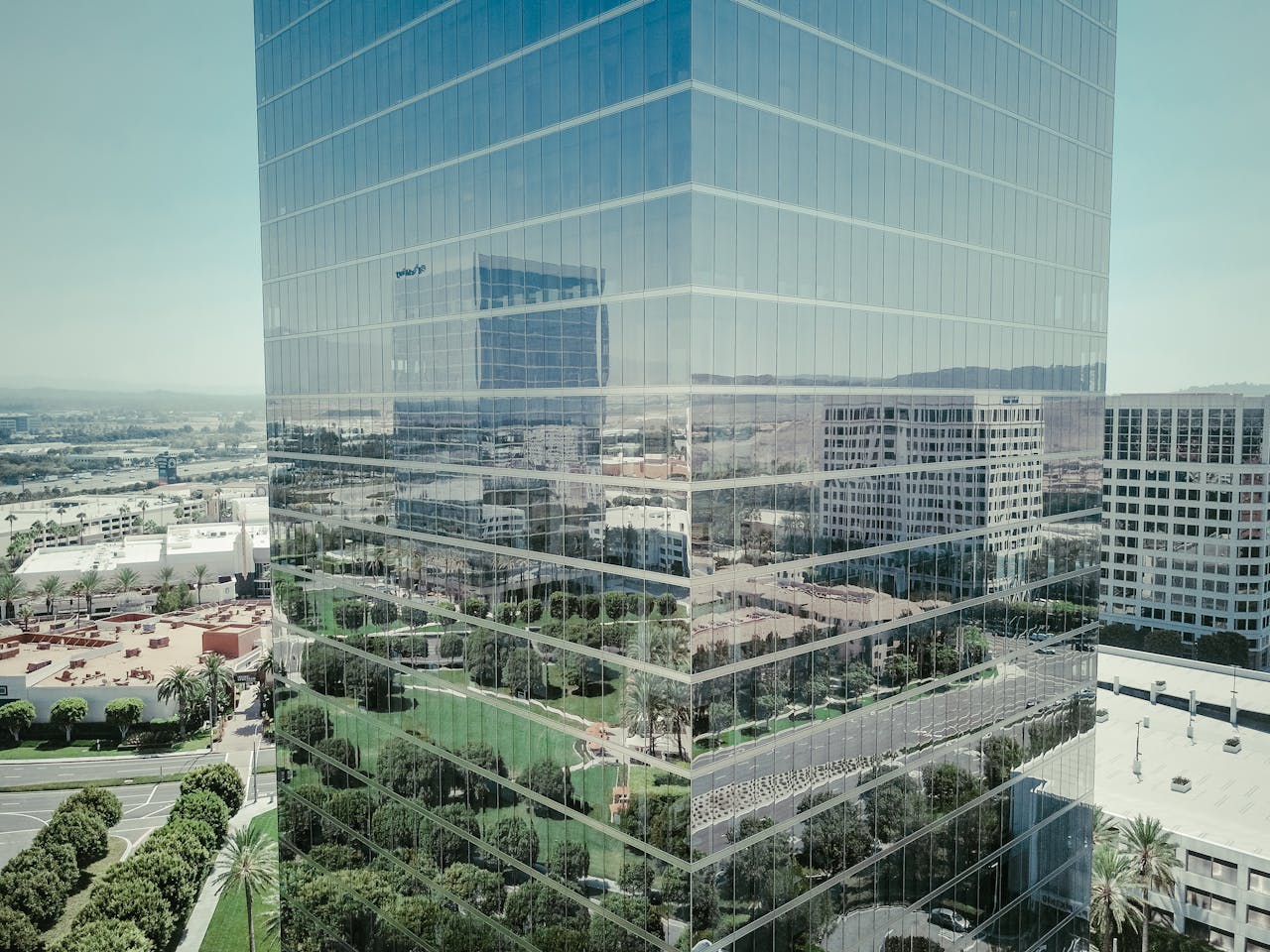Introduction to Axurbain
The term “axurbain” has emerged as a focal point in contemporary discussions surrounding urban innovation and development. As cities continue to evolve, and with increasing challenges such as population growth, climate change, and economic disparities, the need for innovative urban solutions becomes more crucial. Axurbain represents a conceptual evolution in urban planning, aimed at enhancing living conditions while promoting sustainability and inclusivity in urban environments.
Axurbain embodies a blend of urban design principles that prioritize human-centric spaces, ecological balance, and integration of technology within urban infrastructures. Its appeal lies in its promise to address pressing urban issues; by rethinking traditional layouts and infrastructure, axurbain offers potential pathways to constructing more resilient cities. As this term gains traction in online forums and professional circles, it is essential to dissect its implications and understand its role in reshaping perceptions about urban enhancements.
Furthermore, exploring axurbain is vital for both professionals and the public. Understanding how terminology influences perceptions of urban innovations can significantly impact policy-making, funding allocations, and community engagement. The complexity of urban planning is often obscured by jargon, making it imperative for stakeholders to grasp the nuances of terms like axurbain, which encapsulate broader strategic visions for city development.
As we delve deeper into the implications of axurbain, it is crucial to focus on its practical applications and the societal responses it elicits. By assessing its emergence and the surrounding discourse, we can better comprehend the significance of axurbain in the context of ongoing urban transformations. This understanding can assist in fostering a more informed dialogue about our cities’ future and the innovations that will shape them.
Defining Axurbain
Axurbain is a term that has emerged within urban studies, often as a means to describe innovative concepts related to urban development and planning. The word itself is a portmanteau, combining the Latin root ‘axis’ and the French word ‘urbain,’ which translates to ‘urban’ in English. The component ‘axis’ typically refers to a central line or point around which something revolves, suggesting a focus on pivotal elements within urban environments, while ‘urbain’ directly relates to city life or metropolitan areas. Together, these components imply a focus on the core dynamics that drive urbanization and the intricate interactions within city spaces.
The term axurbain accentuates the complexity of urban development in modern societies, stressing the importance of both the structural and social dimensions that create vibrant urban settings. However, a lack of consensus exists among various sources regarding a precise definition of axurbain. This ambiguity can lead to misunderstandings in the public discourse surrounding urban policy and planning. Definitions may vary widely depending on the perspective of the source; some may view it as a purely architectural innovation, while others may see it as a broader socio-economic movement aimed at enhancing urban life.
This lack of a unified definition raises important questions about public understanding and the marketing of urban innovation initiatives. Without a clear and consistent definition of axurbain, stakeholders, including policymakers, developers, and community advocates, may struggle to communicate their goals effectively and mobilize support for projects aimed at redefining urban landscapes. As discussions surrounding urban innovation continue to evolve, establishing a clear understanding of what axurbain entails will be essential for driving meaningful advancements in urban culture and development.
The Promise of Axurbain
The concept of axurbain has garnered attention as a promising framework for urban development. Advocates of axurbain articulate a vision of cities transformed through smart technologies and sustainable practices, which they assert will cultivate cleaner environments, alleviate traffic congestion, and enhance community well-being. Central to this narrative is the idea that axurbain integrates multiple elements such as advanced infrastructure and increased green spaces, fostering a more livable urban landscape.
One of the pivotal claims regarding axurbain is its potential to minimize pollution levels in urban areas. By incorporating smart technologies, such as sensors and data collection systems, cities can monitor environmental factors in real-time, proactively addressing issues like air quality and waste management. This technological integration not only improves the quality of life for residents but also positions cities as leaders in the global fight against climate change.
Moreover, supporters of axurbain emphasize the reduction of traffic as a key benefit, proposing that smart transportation systems will optimize traffic flow and encourage the use of public transport. This, in turn, is said to contribute to decreased reliance on personal vehicles, thereby leading to fewer emissions and less overcrowding. By designing urban spaces that prioritize pedestrian and cyclist accessibility, axurbain aims to create environments where community interaction flourishes.
Another significant aspect of axurbain is the incorporation of green spaces within urban settings. Advocates argue that these areas provide not only aesthetic value but also essential ecological benefits, such as cooling effects and biodiversity support. They contend that urban parks and gardens can promote mental well-being, social cohesion, and physical activity, fundamentally enhancing the overall quality of life for urban dwellers.
In conclusion, axurbain encapsulates a holistic approach to urban development, with supporters championing its claims of cleaner cities, reduced traffic, and improved community well-being through the implementation of smart technologies and green spaces.
The Red Flags of Axurbain
The concept of axurbain, while intriguing, raises several critical concerns that warrant scrutiny. One significant issue is the ambiguous terminology often employed in marketing materials surrounding axurbain initiatives. Terms like “smart growth,” “sustainable development,” and “urban renaissance” are commonly used to paint a promising picture but lack clear definitions. This vagueness can lead to misinterpretations and misrepresentations of what axurbain truly entails, fostering skepticism among stakeholders.
Moreover, the reliance on buzzwords frequently appears as a tactic in promotional campaigns, diverting attention from substantive evaluations of the proposals. For instance, some recent urban development projects touted as transformative ended up failing to deliver on their ambitious promises, highlighting a trend where marketing overshadows genuine innovation. The experience with “eco-cities” and “smart cities,” which have had a checkered history with uneven success rates, exemplifies this concern. These projects often encountered significant backlash due to mismanagement, insufficient funding, or overhyped expectations that did not materialize.
Additionally, the broad and often unclear objectives associated with axurbain can lead to a lack of accountability. Without well-defined goals, it becomes challenging to measure success or assess potential pitfalls. Stakeholders may find it difficult to ascertain whether initiatives labeled as axurbain are sustainable or merely an exercise in public relations. This can result in diminished public trust and increased resistance to new developments, as communities become wary of lofty claims that may not yield tangible results.
Given these red flags, it is crucial to approach axurbain initiatives with a critical lens. Stakeholders should insist on transparency and detailed plans to ensure that projects genuinely contribute to urban innovation rather than serve as marketing ploys lacking substance.
The Role of Technology in Urban Development
Technology plays a pivotal role in the evolution of urban development, particularly in the context of the growing trend towards smart cities. The integration of advanced technologies into urban planning can facilitate enhanced efficiency in transportation, resource management, and citizen engagement. Many cities around the world are implementing smart city initiatives that leverage technology to create a more connected and sustainable urban environment. These initiatives aim to improve the quality of life for residents while addressing challenges such as congestion, pollution, and urban sprawl.
One of the most significant aspects of urban innovation through technology is the application of data analytics. Cities are increasingly using data collected from various sources, such as sensors and social media, to inform decisions related to infrastructure development, public safety, and environmental sustainability. This data-driven approach aligns with the principles of axurbain, which advocates for a systematic and intelligent integration of technology into the urban fabric. For instance, the implementation of smart traffic management systems utilizes real-time data to optimize traffic flow, significantly reducing travel times and improving air quality.
Another area where technology has made an undeniable impact is in energy management. Smart grids and renewable energy technologies offer cities the tools to become more energy-efficient, reducing reliance on fossil fuels and minimizing carbon emissions. Furthermore, the rise of urban mobility solutions such as electric vehicles and shared transportation services exemplifies how technology can transform the way citizens navigate their cities, thus enhancing access and convenience.
However, it is crucial to maintain realistic expectations regarding the capabilities of technology in urban development. While initiatives inspired by axurbain can spur progress, they must be grounded in achievable goals that account for existing infrastructure, socio-economic conditions, and the diverse needs of urban populations. Emphasizing a balanced approach is essential for realizing the full potential of technology in shaping future urban landscapes.
Case Studies of Urban Innovations
Urban innovation has gained significant attention over the past decades, reshaping cities and their functionalities. Several notable case studies illustrate successful urban innovation projects that have positively impacted urban living. Examining these examples provides valuable insights into effective strategies and potential pitfalls in the context of concepts like axurbain, which often promises transformative changes but may lack practical application.
One prominent case is the High Line in New York City, an elevated linear park created on a former railway line. This project highlights how urban space can be repurposed to enhance public engagement, environmental sustainability, and community aesthetics. The High Line has successfully transformed an underutilized structure into a vibrant public space, attracting millions of visitors annually, contributing to local economic growth, and promoting biodiversity. This example emphasizes the efficacy of urban renewal initiatives that focus on innovative design and community involvement, standing in contrast to the sometimes vague benefits expected from axurbain.
Another striking instance is the extensive bike-sharing program implemented in cities like Copenhagen. This initiative demonstrates how integrating sustainable transportation options can significantly improve urban mobility and reduce carbon emissions. As a result of this innovative approach, Copenhagen has witnessed a dramatic increase in cycling rates, contributing to a healthier populace and reduced traffic congestion. The case of bike-sharing programs illustrates the real-world application of urban innovation principles, reaffirming a commitment to sustainable practices that axurbain proponents often advocate.
Furthermore, smart city projects worldwide, such as those in Barcelona, have utilized cutting-edge technology to enhance urban infrastructure. Barcelona’s emphasis on data-driven governance has optimized public services, streamlined city management, and improved residents’ quality of life. These successful applications highlight an essential aspect: urban innovations, like axurbain, need to be grounded in practicality and evidence-based strategies to genuinely foster sustainable urban environments.
Experts Weigh In
The discourse surrounding axurbain has gained significant traction among urban planners, architects, and other professionals in the field of urban development. As cities globally grapple with rapid population growth and the associated challenges, the idea of axurbain emerges as a potential response. According to urban planner Dr. Jonathan Ellis, axurbain combines elements of urban and suburban design, aiming to create spaces that promote community interaction while still catering to modern lifestyles. “It’s not just about where people live; it’s about how they live,” he notes, highlighting the need for integrated community spaces that foster social connectivity.
Architect Maria Gonzalez shares a complementary perspective, emphasizing the architectural implications of axurbain. She posits that the blended nature of axurbain can lead to innovative designs that prioritize green spaces and sustainable living. “We have an opportunity to reshape the way urban areas are developed by incorporating natural elements, which is essential for enhancing the quality of life,” she elaborates. The integration of nature in urban environments is particularly relevant, as it helps mitigate the adverse environmental effects often associated with traditional urbanization.
On the other hand, some experts raise skepticism about whether axurbain is a true innovation. Dr. Takashi Sato, a sociologist specializing in urban studies, argues that while the concept is appealing, it may simply represent an evolution of existing trends rather than a groundbreaking shift. “What’s pivotal is not just the name but the effectiveness in addressing real issues like housing affordability and infrastructure sustainability,” he remarks. As the conversation continues, it becomes clear that the true value of axurbain lies in its execution and adaptability to the diverse challenges cities face today.
The Future of Urban Innovation
The landscape of urban development is continually evolving, driven by both technological advancements and changing societal needs. As we look to the future, terms such as axurbain will play a crucial role in shaping our understanding of urban innovation. It is essential, however, to consider whether such terminology will create lasting change or fade into obscurity as new concepts emerge.
Historically, urban innovation has often been characterized by trends that capture the public imagination, only to be replaced by newer ideas or frameworks. For instance, past buzzwords like “smart cities” and “sustainable urbanism” emerged with great enthusiasm but often struggled with implementation and public engagement. As we navigate what lies ahead, it is imperative to ensure that buzzwords, including axurbain, are grounded in actionable and transparent principles rather than mere marketing phrases.
A critical factor affecting the future of urban innovation will be the clarity of communication among stakeholders. Planners, policymakers, and citizens must engage in informed discussions, ensuring that concepts like axurbain reflect genuine advancements in urban living and not just fleeting trends. Transparent dialogue will enhance collaboration, fostering a collective commitment to long-term urban strategies that are adaptable and effective in addressing challenges such as climate change, housing shortages, and infrastructure strain.
Moreover, as urban environments become more complex, the need for interdisciplinary cooperation will become increasingly important. By embracing diverse perspectives, the urban planning sector can cultivate innovative solutions that benefit communities holistically. Consequently, whether axurbain remains relevant will ultimately depend on its integration into pragmatic approaches that prioritize well-being and equity in urban settings.
In conclusion, the future of urban innovation is filled with both challenges and opportunities; the lasting impact of terms like axurbain will depend heavily on clarity, collaboration, and commitment to meaningful progress in urban development.
Conclusion: The Verdict on Axurbain
As we navigate through the complexities of urban development, the emergence of concepts such as axurbain offers both exciting opportunities and notable challenges. This innovative approach to integrating urban design and community needs promises to reshape cities by enhancing livability and sustainability. However, it is essential to critically evaluate the claims made regarding axurbain’s potential impact, as the underlying implementations often tell a different story.
The extensive research and analysis reflect that while axurbain initiatives may encourage more efficient land use and improved public spaces, there are significant pitfalls that warrant attention. Issues such as gentrification, the displacement of local populations, and the prioritization of aesthetics over functionality are persistent concerns. Furthermore, the transparency surrounding these developments is crucial; stakeholders must be held accountable to ensure that axurbain does not merely serve as a buzzword devoid of substance.
Therefore, as we reflect on axurbain, let us remain vigilant and engaged. By demanding transparency and actively participating in dialogues surrounding urban innovations, we can work towards creating more equitable, livable cities capable of addressing both current and future challenges.

We share information about current trends and stories of people all around the world.



